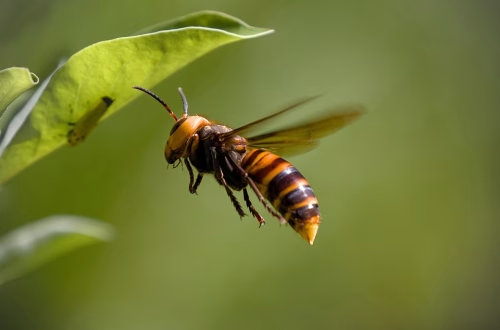Summary:
Termite treatment cost estimates are essential for homeowners and property managers to protect their investments from costly damage. This article explores the factors influencing termite treatment costs, including the type of termites, treatment methods, and property size. It also highlights the importance of addressing termite infestations promptly to avoid structural damage and financial losses. Readers will gain insights into effective pest control strategies, legal considerations, and how to choose the right pest control service. Understanding these aspects ensures informed decisions and long-term protection against termites.
What This Means for You:
- Understanding termite treatment costs helps you budget effectively for pest control services.
- Early detection and treatment can save thousands of dollars in repair costs.
- Choosing a licensed and experienced pest control provider ensures effective and safe termite eradication.
- Ignoring termite infestations can lead to severe structural damage and decreased property value.
Termite Treatment Cost Estimate Explained:
A termite treatment cost estimate is a detailed assessment of the expenses involved in eradicating termites from a property. This estimate typically includes the cost of inspection, treatment methods, and follow-up services. Factors such as the size of the infestation, the type of termites, and the property’s location can significantly influence the overall cost. For example, subterranean termites often require more extensive treatment than drywood termites, leading to higher costs. Understanding these estimates helps property owners make informed decisions and avoid unexpected expenses.
Termite treatment costs can vary widely, ranging from $500 to $3,000 or more, depending on the severity of the infestation and the chosen treatment method. Common treatments include liquid termiticides, bait systems, and fumigation. Each method has its own cost structure and effectiveness. For instance, fumigation is typically more expensive but is highly effective for severe infestations. By obtaining a detailed cost estimate, homeowners can compare services and choose the most cost-effective solution for their specific needs.
Types of Pest Issues:
Termites are classified into several types, each requiring different treatment approaches. Subterranean termites are the most common and destructive, often requiring soil treatment or bait systems. Drywood termites, on the other hand, infest dry wood and may necessitate fumigation or localized treatments. Formosan termites, known for their aggressive behavior, often require more intensive and costly treatments. Understanding the type of termite infestation is crucial for determining the appropriate treatment method and cost.
State and federal laws also play a role in termite treatment. For example, some states require specific licensing for pest control professionals and mandate certain treatment protocols to protect public health and the environment. Additionally, federal regulations may restrict the use of certain chemicals, influencing the availability and cost of treatment options. Property owners should be aware of these legal requirements to ensure compliance and avoid potential fines or legal issues.
Common Pest Control Methods:
Effective termite control methods include liquid termiticides, bait systems, and fumigation. Liquid termiticides are applied to the soil around a property to create a barrier that kills termites on contact. Bait systems involve placing bait stations around the property to attract and eliminate termites. Fumigation is a more intensive method that involves sealing the property and releasing a gas to kill termites. Each method has its own advantages and cost implications, making it essential to choose the right approach based on the severity of the infestation.
Successful termite control strategies often involve a combination of methods. For example, a property with a severe subterranean termite infestation may benefit from both liquid termiticides and bait systems. Regular inspections and preventive measures, such as removing wood debris and maintaining proper drainage, can also help reduce the risk of future infestations. By understanding these methods, property owners can make informed decisions and achieve long-term protection against termites.
Risks and Consequences:
Ignoring a termite infestation can lead to severe structural damage, resulting in costly repairs. Termites can weaken the foundation, walls, and other structural components of a property, posing safety risks to occupants. In extreme cases, untreated termite infestations can lead to the collapse of buildings. Additionally, termite damage can decrease property value, making it difficult to sell or refinance a home. Addressing termite infestations promptly is essential to avoid these risks and protect your investment.
Beyond structural damage, termite infestations can also lead to health issues. While termites do not directly harm humans, their presence can exacerbate allergies and asthma. Furthermore, the use of certain termite treatments, such as fumigation, requires temporary relocation to avoid exposure to harmful chemicals. Understanding the full range of risks and consequences underscores the importance of timely and effective termite treatment.
Choosing a Pest Control Service:
Selecting the right pest control service is crucial for effective termite treatment. Look for a licensed and experienced provider with a proven track record in termite eradication. Check for certifications from reputable organizations, such as the National Pest Management Association (NPMA), to ensure the provider meets industry standards. Additionally, read reviews and ask for references to gauge the provider’s reliability and customer satisfaction.
When choosing a pest control service, consider the provider’s approach to termite treatment. Some providers may offer a one-size-fits-all solution, while others tailor their services to the specific needs of your property. Ask about the treatment methods they use, the expected timeline, and any warranties or guarantees they offer. By selecting a provider that aligns with your needs and budget, you can ensure effective and long-lasting termite control.
People Also Ask About:
- How much does termite treatment cost on average? The average cost of termite treatment ranges from $500 to $3,000, depending on the severity of the infestation and the treatment method used.
- What is the most effective termite treatment method? The most effective method depends on the type of termites and the extent of the infestation. Fumigation is highly effective for severe infestations, while bait systems are ideal for ongoing prevention.
- How long does termite treatment take? The duration of termite treatment varies based on the method used. Liquid termiticides may take a few hours, while fumigation can take several days.
- Can I treat termites myself? DIY termite treatments are not recommended due to the complexity and potential risks. Professional pest control services are more effective and safer.
- How can I prevent future termite infestations? Preventive measures include regular inspections, removing wood debris, maintaining proper drainage, and using termite-resistant materials.
Expert Opinion:
Termite infestations are a serious issue that requires prompt and effective treatment. Ignoring the problem can lead to significant structural damage and financial losses. Homeowners should prioritize regular inspections and preventive measures to reduce the risk of infestations. Choosing a licensed and experienced pest control provider is essential for ensuring safe and effective termite eradication. By staying informed and proactive, property owners can protect their investments and maintain a safe living environment.
Related Key Terms:
- Termite treatment cost estimate
- Subterranean termite treatment
- Drywood termite control
- Fumigation for termites
- Termite bait systems
- Professional pest control services
- Termite prevention tips
Pest Control Disclaimer
This content is for educational purposes only and does not replace professional pest inspection, treatment, or safety advice. Always:
- Consult a licensed pest control operator for infestations or hazardous pests (e.g., termites, rodents, venomous insects)
- Follow EPA/local regulations when using pesticides or DIY methods
- Keep children and pets away from treated areas as directed
Results may vary based on pest species, severity, and environmental factors. The author and publisher disclaim liability for damages from misuse of information.
*Featured image sourced by Pixabay.com





